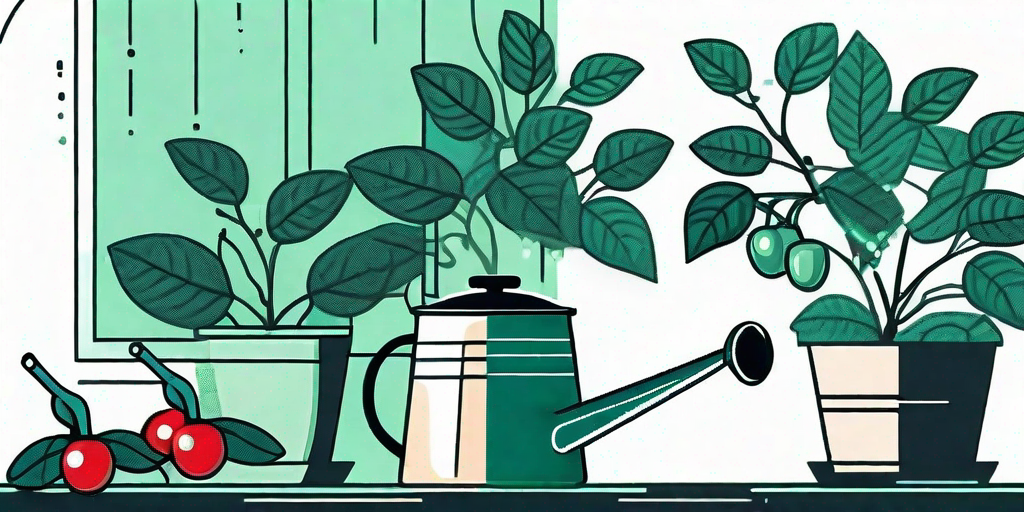
Are you tired of the same old store-bought coffee? Do you crave the satisfaction of brewing a cup of joe from beans you've grown and harvested yourself? If you answered "yes" to either of these questions, then this guide is for you. We're about to embark on a caffeine-fueled journey into the world of homegrown coffee plants. Buckle up, coffee lovers, it's going to be a wild ride!
Understanding Your Coffee Plant
Before we dive into the nitty-gritty of coffee plant care, it's important to understand what you're dealing with. Coffee plants, or Coffea arabica if you want to get technical, are evergreen shrubs native to tropical regions of Africa. They're a bit like your caffeine-addicted friend who can't function without a morning cup of coffee - they love warmth and sunshine.
These plants can grow up to 15 feet tall in the wild, but don't worry, they won't take over your living room. When grown indoors, they typically reach a manageable height of 3-6 feet. And yes, they do produce those magical beans that can be roasted and ground into coffee. But patience is key here - it can take a few years for a new plant to start producing fruit.
The Anatomy of a Coffee Plant
Let's get up close and personal with your coffee plant. It has glossy, dark green leaves that are oval in shape and grow opposite each other on the branches. The flowers are white and fragrant, and they eventually give way to the coffee cherries. These cherries start out green and turn red as they ripen, each one containing two coffee beans.
It's important to note that not all coffee plants are created equal. There are several different varieties, each with their own unique characteristics. Some are more resistant to disease, some produce higher quality beans, and some are just plain prettier to look at. But for the home grower, the Arabica variety is usually the best choice. It's relatively easy to care for and produces a high-quality bean that's perfect for your morning brew.
Planting Your Coffee Plant
Now that we've got the basics covered, it's time to get your hands dirty. But before you start digging, there are a few things you need to know.
Firstly, coffee plants love well-draining soil. They're not fans of "wet feet", so make sure you choose a pot with good drainage. A mixture of peat moss, perlite, and vermiculite makes an excellent soil for your coffee plant.
Secondly, these plants are light lovers. They prefer bright, indirect light - think of a spot near a window, but not directly in the sun's rays. Too much direct sunlight can scorch the leaves, while too little light can stunt the plant's growth.
Finally, remember that coffee plants are tropical creatures. They like it warm, with temperatures between 60 and 70 degrees Fahrenheit. They're not fans of drafts or sudden temperature changes, so keep them away from doors and air conditioning vents.
Step-by-Step Planting Guide
- Choose a pot with good drainage and fill it with a mixture of peat moss, perlite, and vermiculite.
- Place your coffee plant in the pot, making sure the top of the root ball is level with the top of the soil.
- Water the plant thoroughly, then place it in a bright, warm location.
- Wait for the magic to happen!
Caring for Your Coffee Plant
Once your coffee plant is happily settled in its new home, it's time to start thinking about ongoing care. This involves watering, fertilizing, pruning, and - the best part - harvesting the beans.
Watering should be done regularly, but remember that coffee plants don't like to sit in water. Wait until the top inch of soil is dry before watering again. Overwatering can lead to root rot, which is a surefire way to kill your plant.
As for fertilizing, a balanced houseplant fertilizer will do the trick. Apply it every two weeks during the growing season, but cut back to once a month during the winter.
Pruning is important to keep your coffee plant manageable and to encourage more branching. This means more flowers and more coffee cherries! Prune in the spring, cutting back the plant by about a third.
Harvesting Your Coffee Beans
Now for the moment you've been waiting for - harvesting your coffee beans! This usually happens in the fall, when the coffee cherries turn from green to a bright, glossy red. Simply pick the cherries, remove the beans, and let them dry for a few weeks. Then, it's time to roast, grind, and brew!
Frequently Asked Questions
Can I really grow a coffee plant indoors?
Yes, you absolutely can! Coffee plants make excellent houseplants. They're attractive, easy to care for, and they can even improve indoor air quality. Plus, they give you coffee. What more could you want?
How long does it take for a coffee plant to produce beans?
Patience, grasshopper. It can take a few years for a new coffee plant to start producing fruit. But trust us, the wait is worth it.
What if my coffee plant isn't flowering?
Don't panic! There could be a few reasons for this. It could be that the plant is too young, or it's not getting enough light, or it's not being fertilized enough. Try adjusting these factors and see if it makes a difference.
Conclusion
So there you have it, folks. Everything you need to know to grow and care for your very own coffee plant. It might take a bit of time and effort, but the reward - a cup of coffee made from your own homegrown beans - is definitely worth it. So why not give it a try? You might just find that it's your new favorite hobby.
And remember, as with any plant, the key to success is patience and care. So treat your coffee plant well, and it will reward you with a bounty of delicious, homegrown coffee beans. Happy brewing!















